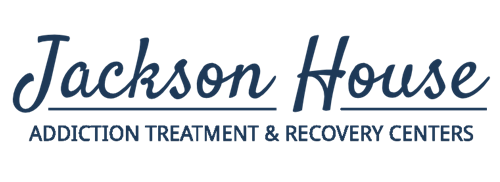Admission Line (866) 396-3655
The Dangers of Synthetic Opioids

In recent years, the word 'opioid' has become synonymous with the growing epidemic of addiction and overdose. As public awareness of the dangers associated with natural opioids grows, the emergence of their synthetic counterparts has muddied the waters even further. If you're not familiar with the world of opioids or synthetic opioids, it's important to learn what they are and the threat they pose to society.
Natural vs. Synthetic Opioids: The Basics
At their core, opioids are a class of drugs that include both legal, pain-relieving medicines like morphine, and illegal drugs, like heroin. Natural opioids come directly from the opium poppy plant. In contrast, synthetic opioids, as the name suggests, are man-made. They are created in labs and are designed to mimic the effects of natural opioids. While they are often prescribed for pain management, the dangers they present can't be overlooked.
Why Are Opioids So Addictive?
When discussing the dangers of opioids, synthetic or natural, it's crucial to address a fundamental question: Why are these substances so powerfully addictive?
Brain Chemistry At Play
Opioids work by binding to specific receptors in the brain and spinal cord on a molecular level, interrupting pain signals. This is why opioids are such effective painkillers and are prescribed after major surgeries. Unfortunately, that's not all they do. They also boost the release of a neurotransmitter called dopamine. Dopamine is our "feel good" neurotransmitter, playing a fundamental role in pleasure, reward, and motivation pathways in the brain. So, when these dopamine-enhancing substances are introduced to the system, they cause a significant surge in feelings of euphoria. With continuous use, a person’s brain can start depending on these opioids to release dopamine, which leads to increased cravings and higher doses to achieve the same euphoric effect. This is called tolerance. Over time, opioids are not as potent as they were in the beginning, so if an individual is chasing that euphoric feeling, they may want to take higher doses.
Physical Dependence And Withdrawal
When a user builds a tolerance to opioids, they also can develop a physical dependence. Their body may become so used to the drug that they struggle to function normally without it. When an addicted individual tries to quit or reduce their opioid intake, they experience withdrawal symptoms. These can range from mild to severe symptoms. Mild symptoms are things like fatigue, feeling sluggish, and headaches. Severe symptoms can present more intense effects like vomiting, experiencing cold sweats, and raging headaches. The fear of these intense and often painful withdrawal symptoms can make quitting even harder. For many, the cycle of using, trying to quit, facing withdrawal, and then using again becomes a relentless loop.
The Emotional And Psychological Aspects
Unfortunately, opioids don't just create a physical dependency; they also often entangle users in a web of emotional and psychological dependence. The temporary escape from pain, stress, or other underlying issues that opioids provide can make them incredibly enticing. Over time, users might find it challenging to cope with daily stresses and emotions without using the drug. The stigma attached to addiction can also further complicate matters. Although some might be in denial about their addiction, most people know when they are hooked, and instead of seeking help immediately, they might hide their addiction or feel shame or guilt. This can lead to feelings of isolation and a deepening dependence on the drug as a coping mechanism.
Types of Synthetic Opioids
Among the synthetic opioids that have caught the attention of health experts are substances like Para-fluorofentanyl, acetyl fentanyl, and butyryl fentanyl.
Para-fluorofentanyl
An analog of the notorious fentanyl, this drug is more potent than most opioids and can lead to overdose with even a minute amount. Often sold as a white powder, it can be snorted, ingested, or injected, making it a versatile threat. It's believed to be five times stronger than traditional fentanyl.
Acetyl Fentanyl
Not to be confused with traditional fentanyl, acetyl fentanyl is another synthetic opioid. While it's less potent than fentanyl, its risk factor remains high, especially when users aren't aware of its presence in a drug mix.
Butyryl Fentanyl
This is yet another analog of fentanyl, but with reduced potency. It's believed to be 25% as strong as regular fentanyl. However, it has been linked to numerous overdose cases, suggesting that users often consume it in higher quantities, thinking it's less dangerous.
Overdose Statistics: A Grim Picture
The dangers of synthetic opioids become scarily obvious when looking at overdose statistics. According to recent reports, synthetic opioids have been linked to over 70,000 overdose deaths in the United States (National Institute on Drug Abuse, 2023). The potency and unpredictability of these drugs make them prime culprits in overdose cases, especially when mixed with other substances. The impact of these drugs is nothing short of scary.
Recognizing The Drug
An important but not so obvious safeguard is being able to identify these infamous synthetic opioids. These drugs are often sold as powders, pills, or patches, but they can be mixed with other drugs, making detection very difficult. Many overdose survivors have claimed that they were not aware of synthetic opioids in the drug they consumed. For instance, synthetic opioids are sometimes added to heroin to boost its potency, but this also increases the risk of overdose. The signs of opioid overdose include slowed breathing, pinpoint pupils, unconsciousness, and blue or purplish lips and nails. If you suspect someone has overdosed, it's imperative to seek emergency medical help immediately. Furthermore, learning how to use medical tools such as Narcan can be life-saving.
Breaking Free: The Road To Recovery
Understanding the dangers of synthetic opioids is the obvious but important first step. The next is acknowledging the role of addiction. Addiction can trap anyone, and recognizing that one needs help is not a sign of weakness but strength. In fact, we can all contribute to removing the stigma around drug addiction to create a safe space for people to come forward to receive help and care. Recovery is possible. While the journey might seem daunting, rehab centers like Jackson House are equipped with the tools, resources, and expertise needed to help individuals back to a healthy life, free from the grips of drugs.
How To Get Help
If you or a loved one is struggling with an addiction to synthetic opioids, remember that you're not alone, and there is a drug-free outcome you can achieve. We're here to help. The road to recovery starts with a single step; make the choice to contact us today and embrace a life free from the dangers of synthetic opioids. Our dedicated and compassionate team will help you every step of the way with no judgment and an open mind.
